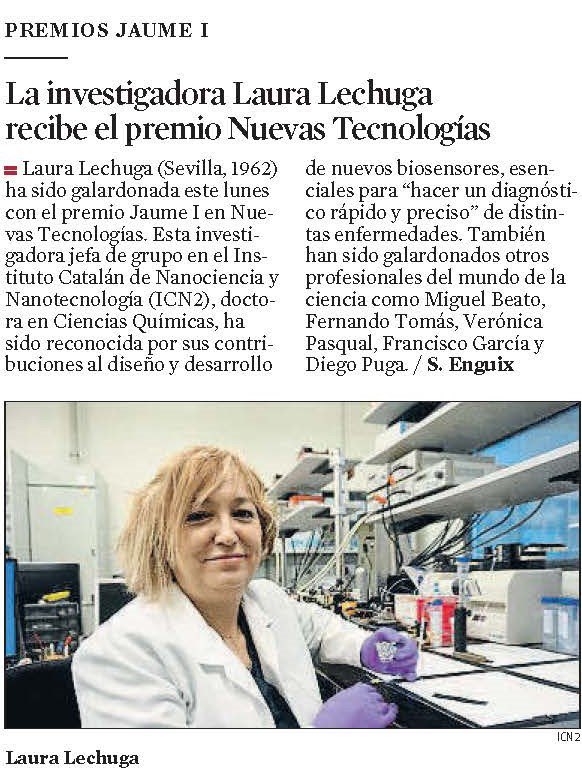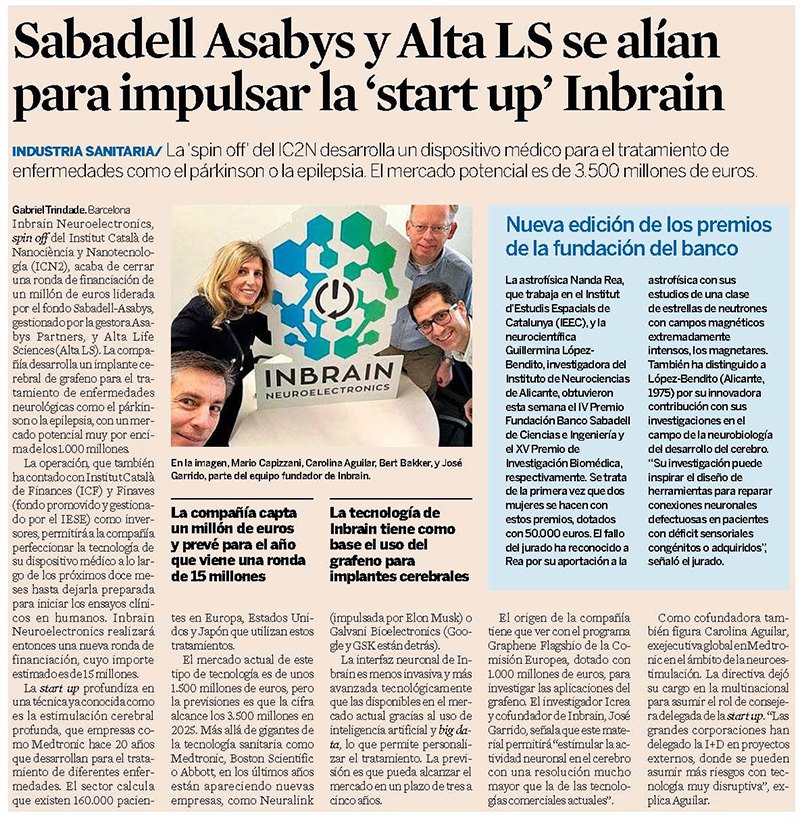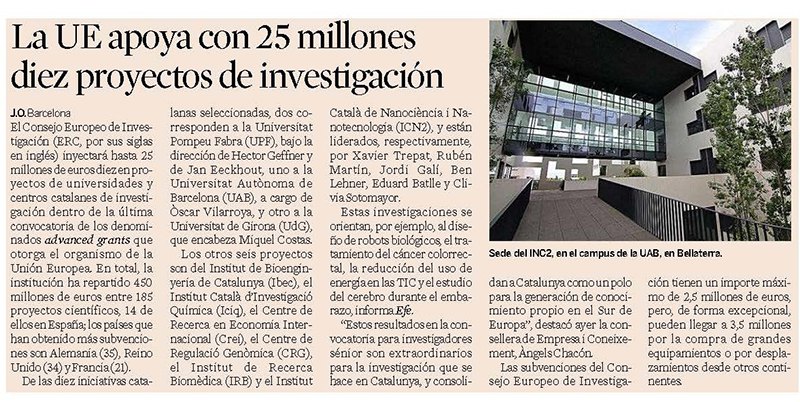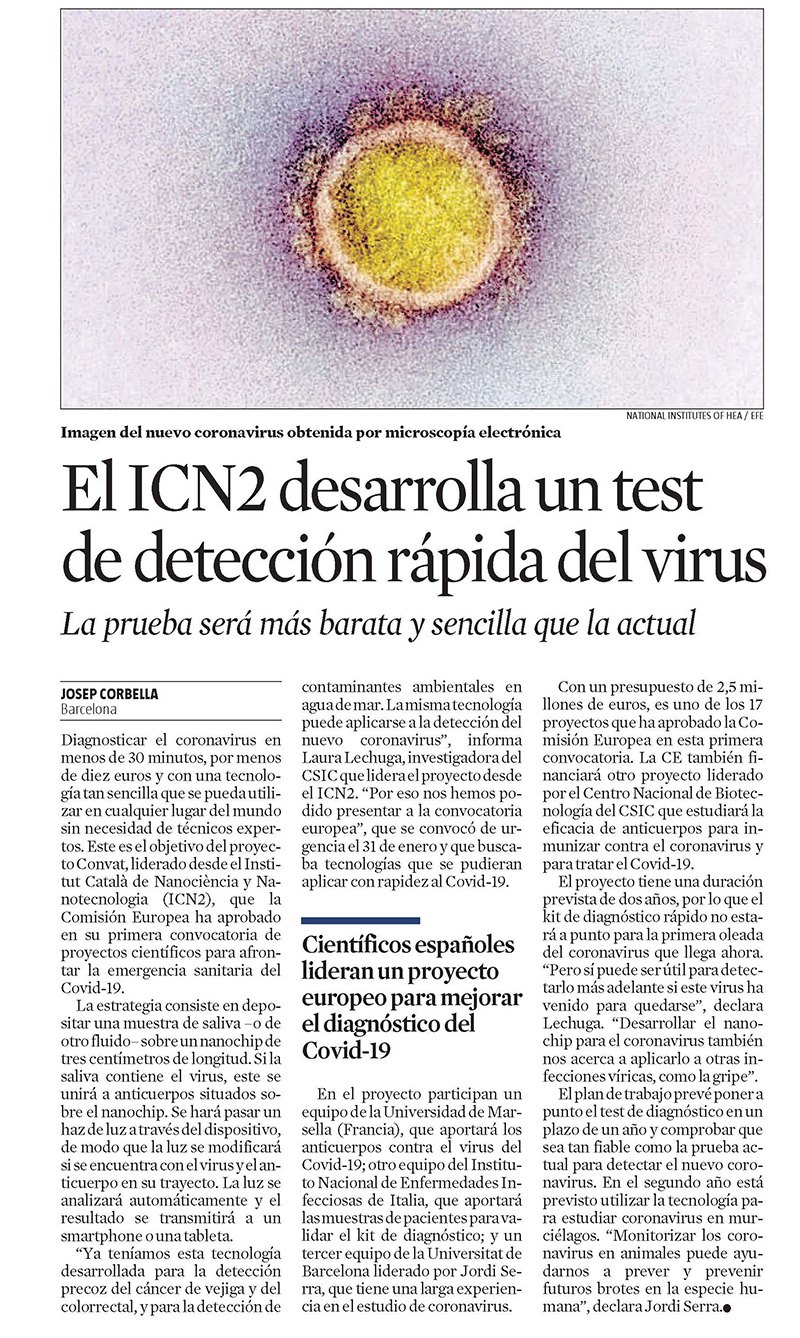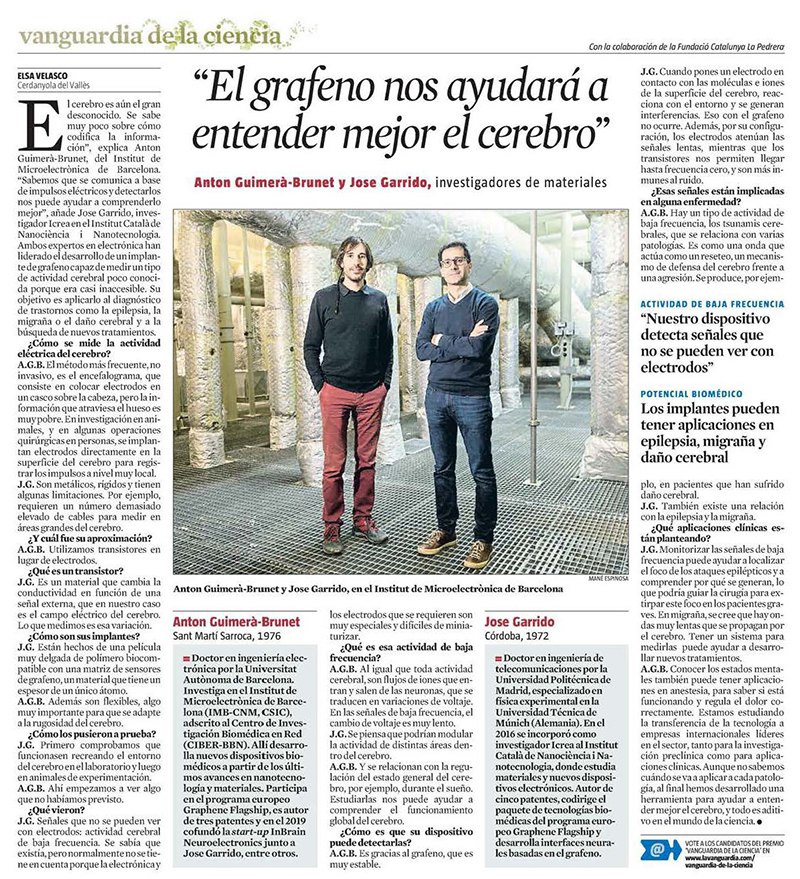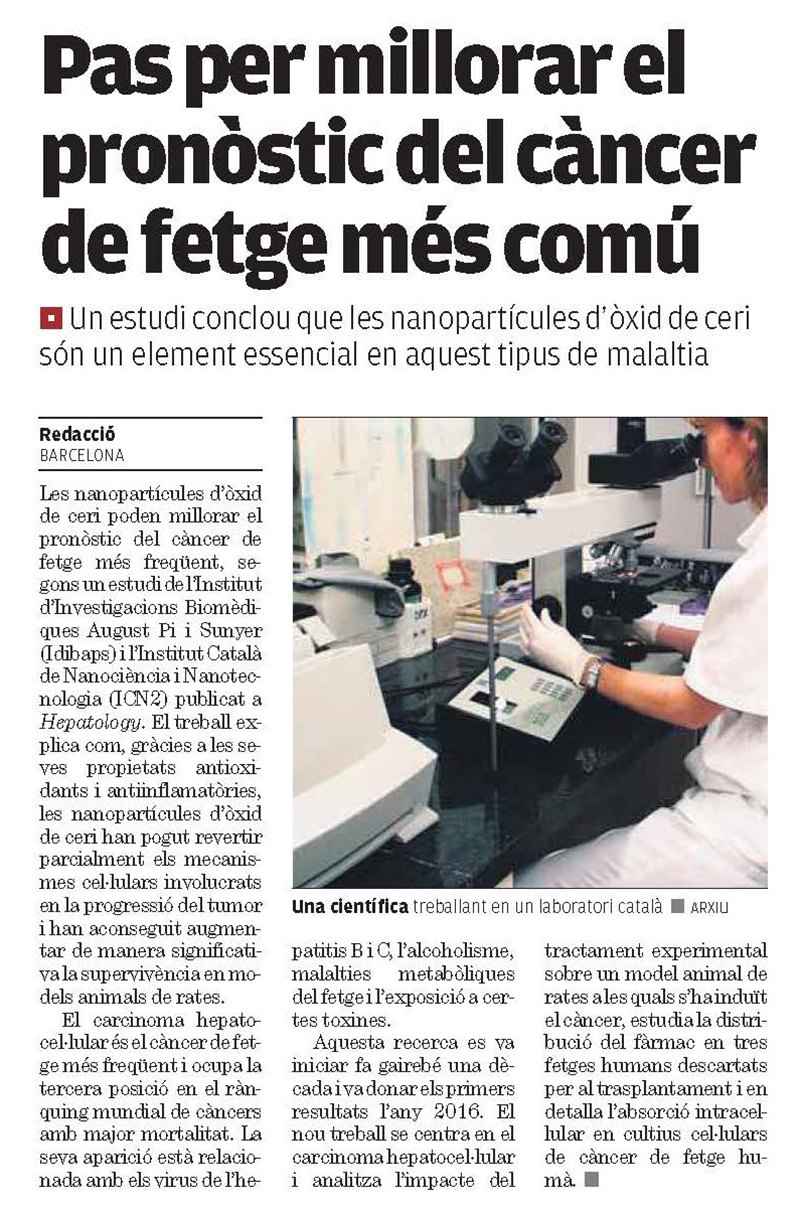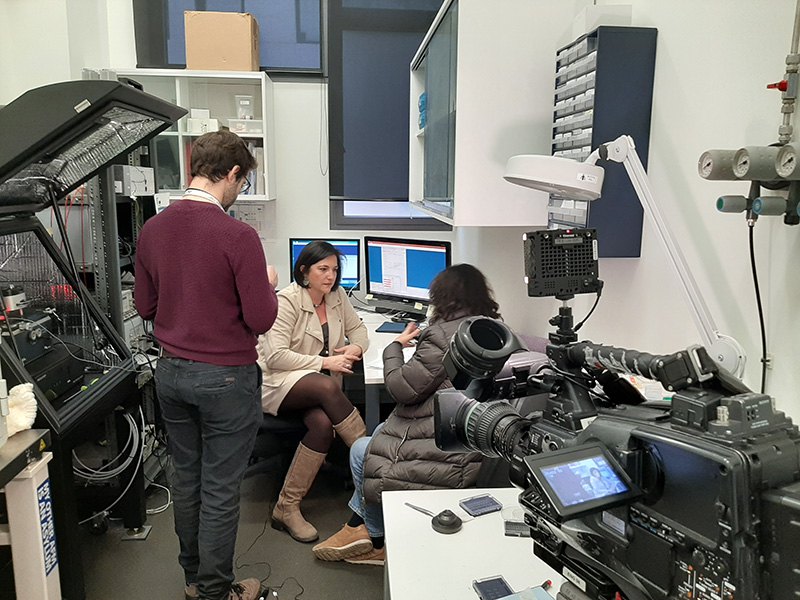Media impact
In 2020 the ICN2 continued its efforts to reach out to the general and scientific public through the media. Close working relationships with journalists, ten scientific press releases and other research-related news articles scored a high total number of journalistic impacts for the ICN2.
Since 2016 the ICN2 has generated around 800 international online media impacts per year and a few dozen traditional media impact. The yearly numbers showed a growing trend. In 2020 these numbers were dramatically increased mostly because of the leading role of the ICN2 researchers in the design of nanobiosensors to diagnose COVID-19.
Prof. Laura Lechuga and members of the Nanobiosensors and Bioanalytical Applications Group she leads generated a lot of media impacts after announcing they were leading a European Project named CoNVaT. Their research to design a low-cost and very sensitive technique to detect the coronavirus causing COVID-19 has received a massive coverage, together with the prestigious awards collected by Prof. Laura Lechuga during the year. The Group led by ICREA Prof. Arben Merkoçi, Nanobiolectronics and Biosensors Group, also gained more impacts than in previous years for their COVID-19 related research.
The ICN2 researches were involved in 19 press releases through the year. Covered topics went beyond COVID-19 and included other research topics regarding energy, fundamental physics, nanomedicine, the acquisition of new equipment with FEDER Funds, awarded grants such as the ERC Advanced Grant earned by ICREA Prof. Clivia Sotomayor and the advances made the spin-off company INBRAIN Neuroelectronics.
During the year the media tracking tools used by the ICN2, which are mainly focused on Catalan and Spanish media, detected 280 mentions of the ICN2 and its researchers in printed press, and at least 14 TV appearances and 17 radio appearances. 2020 was an outstanding year in terms of media impact.
